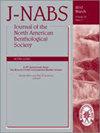Small but mighty: headwaters are vital to stream network biodiversity at two levels of organization
引用次数: 262
Abstract
Abstract Headwaters (stream orders 1–2) traditionally have been considered depauperate compared to mid-order streams (orders 3–4)—a conclusion that arises from a perception of streams as linear systems and emphasizes change in average &agr; (local) diversity along streams. We hypothesized an opposite pattern for &bgr; (among-site) diversity and suggest that headwaters might account for a large degree of basin-scale biodiversity if considered within the more realistic framework of streams as branching networks. We assembled pre-existing biodiversity data from across the globe to test this hypothesis broadly at the population-genetic (mitochondrial haplotype diversity within species) and community (species/taxonomic diversity) levels, with a focus on macroinvertebrates. We standardized 18 (9 headwater and 9 mid-order) population-genetic and 16 (10 headwater and 6 mid-order) community-level ecoregional data sets from 5 global ecozones for robust comparisons of &bgr;-diversity estimates between the 2 stream-size categories. At the population-genetic level, we applied measures of among-site variation commonly used at both population-genetic (FST and &PHgr;ST) and community (Sørensen's dissimilarity with both presence/absence and abundance data) levels and developed a novel strategy to compare expected rates of loss of &ggr; (regional) diversity as individual sites are eliminated sequentially from regions. At the community level, we limited analyses to Sørensen's presence/absence measures. We found that Sørensen's dissimilarity was significantly greater among headwaters than among mid-order streams at both population-genetic and community levels. We also showed that individual headwater reaches accounted for greater proportions of genetic &ggr; diversity than did mid-order reaches. However, neither FST nor &PHgr;ST was significantly different between stream-size categories. These measures, which have been used traditionally for comparisons of population-genetic variation, measure proportions of total variation rather than solely among-site variation (i.e., they also are influenced by within-site variation). In contrast, Sørensen's dissimilarity measures only among-site variation and, therefore, is presumably more useful for reflecting general &bgr; diversity. Overall results suggest that, on average, headwaters probably contribute disproportionately to biodiversity at the network scale. This finding demands a shift in thinking about the biodiversity contributions of small headwaters and has strong conservation implications for imperiled headwater streams around the world.小而有力:源头对两个组织层面的网络生物多样性至关重要
传统上,与中阶流(3-4阶)相比,上游(流阶1-2)被认为是不充分的——这一结论源于对流的线性系统的感知,并强调平均&agr的变化;(当地)溪流的多样性。我们假设了一个相反的模式。(在站点之间)的多样性,并建议如果在更现实的溪流分支网络框架内考虑,源头可能占很大程度的流域尺度生物多样性。我们收集了全球已有的生物多样性数据,在种群遗传(物种内线粒体单倍型多样性)和群落(物种/分类多样性)水平上广泛地验证了这一假设,重点是大型无脊椎动物。我们标准化了来自5个全球生态区的18个(9个源头和9个中期)种群遗传数据集和16个(10个源头和6个中期)社区水平的生态区域数据集,以对两种河流大小类别之间的多样性估计进行有力比较。在种群遗传水平上,我们应用了种群遗传(FST和&PHgr;ST)和群落(Sørensen的存在/缺失和丰度数据的差异)水平上常用的位点间变异测量方法,并开发了一种新的策略来比较&ggr的预期损失率;(区域)多样性作为单个站点从区域中依次消除。在群落水平上,我们将分析限制在Sørensen的存在/缺失措施上。结果表明,在种群遗传水平和群落水平上,源流之间的Sørensen差异显著大于中流之间的Sørensen差异。我们还发现,个体源河段占遗传比例更大;多样性比中阶地区要高。然而,FST和&PHgr;ST在流大小类别之间都没有显著差异。传统上用于比较种群遗传变异的这些措施衡量的是总变异的比例,而不仅仅是位点间变异的比例(即它们也受到位点内变异的影响)。相比之下,Sørensen的不相似性只测量了地点之间的变化,因此,可能对反映一般的&bgr;多样性。总体结果表明,平均而言,源头可能对网络尺度上的生物多样性贡献不成比例。这一发现要求人们改变对小型水源对生物多样性贡献的看法,并对世界各地处于危险中的水源溪流具有强烈的保护意义。
本文章由计算机程序翻译,如有差异,请以英文原文为准。
求助全文
约1分钟内获得全文
求助全文

 求助内容:
求助内容: 应助结果提醒方式:
应助结果提醒方式:


